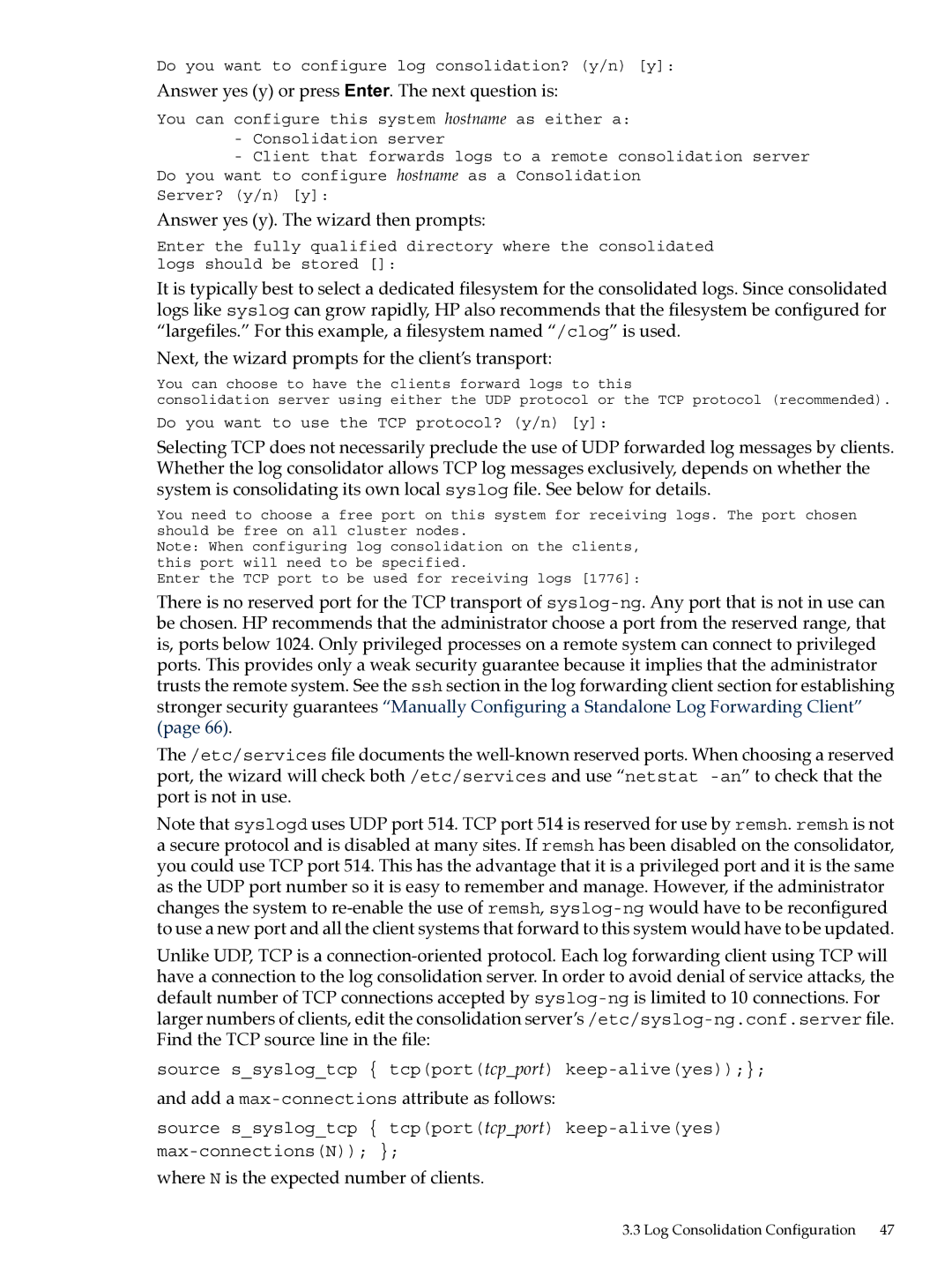Do you want to configure log consolidation? (y/n) [y]:
Answer yes (y) or press Enter. The next question is:
You can configure this system hostname as either a:
-Consolidation server
-Client that forwards logs to a remote consolidation server Do you want to configure hostname as a Consolidation
Server? (y/n) [y]:
Answer yes (y). The wizard then prompts:
Enter the fully qualified directory where the consolidated logs should be stored []:
It is typically best to select a dedicated filesystem for the consolidated logs. Since consolidated logs like syslog can grow rapidly, HP also recommends that the filesystem be configured for “largefiles.” For this example, a filesystem named “/clog” is used.
Next, the wizard prompts for the client’s transport:
You can choose to have the clients forward logs to this
consolidation server using either the UDP protocol or the TCP protocol (recommended).
Do you want to use the TCP protocol? (y/n) [y]:
Selecting TCP does not necessarily preclude the use of UDP forwarded log messages by clients. Whether the log consolidator allows TCP log messages exclusively, depends on whether the system is consolidating its own local syslog file. See below for details.
You need to choose a free port on this system for receiving logs. The port chosen should be free on all cluster nodes.
Note: When configuring log consolidation on the clients, this port will need to be specified.
Enter the TCP port to be used for receiving logs [1776]:
There is no reserved port for the TCP transport of
The /etc/services file documents the
Note that syslogd uses UDP port 514. TCP port 514 is reserved for use by remsh. remsh is not a secure protocol and is disabled at many sites. If remsh has been disabled on the consolidator, you could use TCP port 514. This has the advantage that it is a privileged port and it is the same as the UDP port number so it is easy to remember and manage. However, if the administrator changes the system to
Unlike UDP, TCP is a
source s_syslog_tcp { tcp(port(tcp_port)
source s_syslog_tcp { tcp(port(tcp_port)
where N is the expected number of clients.
3.3 Log Consolidation Configuration | 47 |
